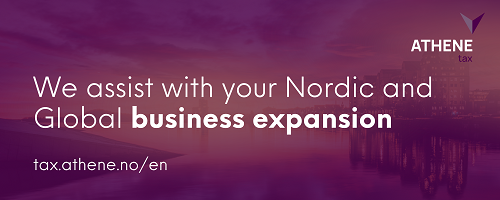The complaint concerned a binding response where the Tax Authority (SKAT) had answered “no” to question 2, regarding whether SKAT could confirm that the inquirer was not required to pay VAT on the transfer of property to H2 A/S.
Considering the representative’s claims and arguments presented to SKAT, the National Tax Tribunal understood the question to inquire whether the transfer of real estate along with an associated construction project could be classified as a business transfer covered by the former VAT Act’s Section 8(1), 3rd paragraph. The company was part of a larger real estate group engaged in buying, selling, project development, and commercial leasing of real estate. According to the information provided, the company’s purpose was to acquire building plots and develop, subdivide, and resell them in large parcels. The company was registered for the leasing of commercial properties. In July 2012, the company acquired Address Y1. In connection with the development of Address Y1, the company established the real estate project […].
On July 5, 2017, the company requested to transfer the property and real estate project to a subsidiary through a tax-free contribution with accounting effect from May 1, 2017. Permission for tax-free transfer pursuant to Sections 15c and 15d of the Merger Tax Act was granted on October 11, 2017. Subsequently, the subsidiary was founded on October 25, 2017, and the company contributed the property consisting of a plot with the ongoing construction to the subsidiary in exchange for capital shares. Based on this, the National Tax Tribunal found that the company was a taxable entity engaged in independent economic activities, and the transfer of assets to the subsidiary was carried out by the company as a taxable entity. Furthermore, the National Tax Tribunal found that on October 25, 2017, the company transferred a property consisting of a plot with ongoing construction to its subsidiary, and this transfer was subject to VAT according to Section 4(1) of the VAT Act. The National Tax Tribunal noted that the company had not provided lease agreements or other documentation indicating that the company was engaged in ongoing leasing activities on the property at the time of transfer. Therefore, the National Tax Tribunal concluded that the transfer of the property did not include all the elements necessary for the subsidiary to carry out the economic activity of real estate leasing. Thus, the transaction could not be qualified as a complete or partial business transfer under the former VAT Act’s Section 8(1), 3rd paragraph. The National Tax Tribunal also noted that the former VAT Act’s Section 8(1), 3rd paragraph, only applied in connection with the transfer of a registered business. According to the information, the subsidiary was intended to use the property for leasing purposes, as per Section 13(1), No. 8 of the VAT Act. According to Section 51(1), 3rd paragraph of the VAT Act, voluntary registration could not include residential leasing. Thus, the second part of the former VAT Act’s Section 8(1), 3rd paragraph, would also not be fulfilled. Based on these considerations, the National Tax Tribunal found that the company was required to pay VAT on the transfer of assets (the property) to its subsidiary and upheld SKAT’s response to question 2. The company’s claim for exemption under the former VAT Act’s Section 8(1), 1st paragraph, was not considered covered by the question raised in the binding response, so the National Tax Tribunal referred the company to request a new binding response regarding this matter.
Source: info.skat.dk















